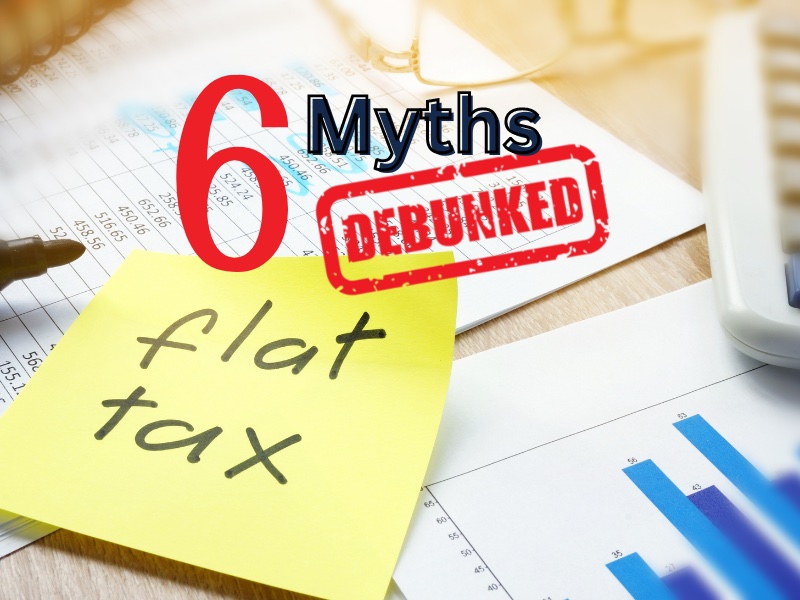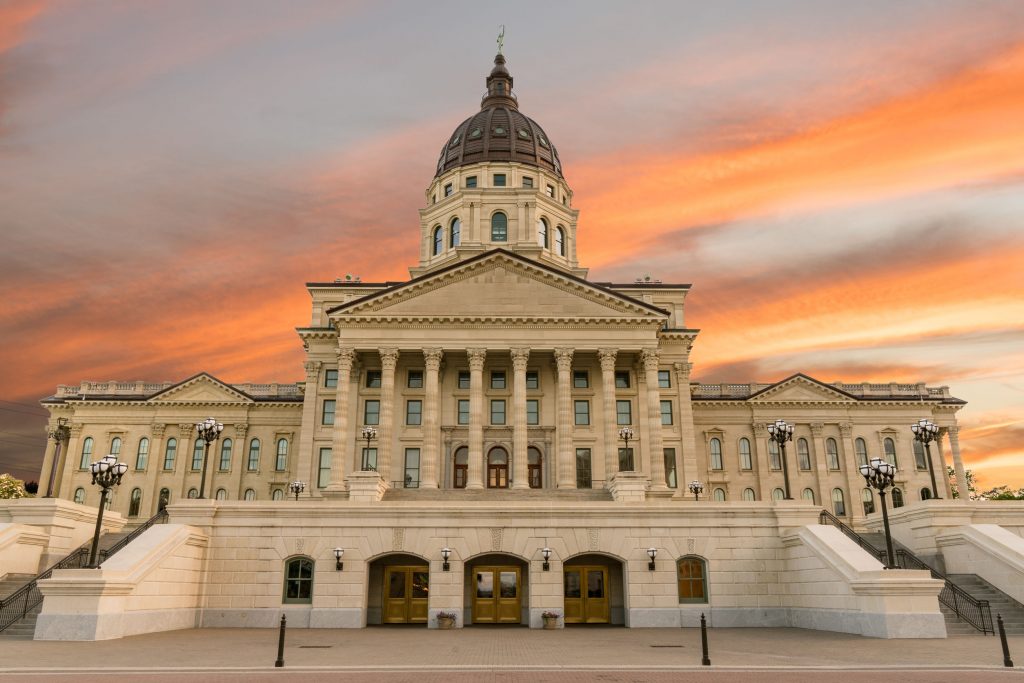States across the country are joining the “Flat Tax Revolution,” in which a tax system with graduated rates based on income is modified so that one, typically lower, tax rate is applied to everyone’s taxable income. A few weeks ago, we discussed some reasons why a flat tax is beneficial, and now, here are six common misconceptions levied against a flat tax and tax reform in general.
1. The tax cut will only benefit the wealthy and big business
Kansas’s highest marginal income tax rate of 5.7% starts at income in excess of $30,000 for single and $60,000 for married filers. With Kansas’s median household income being $64,521, hundreds of thousands of people would have a tax reduction immediately – that’s far from benefitting only an elite few. In fact, there were almost half a million Kansas tax returns filed in 2020 with adjusted gross income between $50,000 and $250,000. $250,000 is a fine living, but I don’t think anyone closer to $50,000 would call themselves “rich.”
An adequately structured flat tax ensures that nobody pays a higher tax rate or more out of their wallet than they do under a graduated rate system. In order to accomplish that and implement one flat rate, temporary deductions until the flat tax is fully implemented or a larger standard deduction for lower incomes could be implemented. Or, the final rate could kick in at such a level that nobody pays a higher rate than what they currently pay.
A flat tax increases people’s willingness to work by keeping more in their paychecks. Studies of flat taxes in Europe have found that their implementation increases the number of people working and the number of hours they work, with the most significant effects coming with tax cuts for people with lower incomes.
2. The tax cut will deprive tax dollars from education, childcare, and healthcare
Interestingly, this argument wasn’t applied to a reduction in the food sales tax rate, and with good reason; it’s just a false means of opposing income tax reductions. All states provide the same basket of services to the public, yet every state differs vastly in how much they choose to spend providing services. In 2020, states with an income tax spent 52% more per resident than states without one. Kansas spends 47% more per resident than South Dakota…63% more than Texas, 68% more than New Hampshire – three states without an income tax. What services are available in Kansas that are not provided in those states?
Spending less is about reducing the cost of a service, not hacking and slashing programs from the budget. Measures like performance-based budgeting help analyze efficiency and isolate programs to evaluate whether the government is operating at its most cost-effective. Often, it’s less a question of “Is there waste?” and instead “What waste is there to eliminate?”
3. The flat tax is regressive and will hurt the poor
First of all, a properly-designed flat tax doesn’t increase taxes on anyone, and it can be structured to reduce taxes for some of the lowest earners – see the examples listed under Myth 1.
Second, a flat tax is not regressive because everyone pays the same rate on their taxable income.
4. The tax reform will create a budget crisis just like under Brownback
Since the Brownback Tax Cuts in 2012, 24 states across the country have cut their income taxes and have not experienced the same budget problems as Kansas did. For instance, since 2012, North Carolina has flattened its income tax rate to 4.99% with a phase-out of the corporate income tax in 2029, all the while stabilizing the budget. In 2022, Iowa signed tax reform to lower to a 3.9% flat income tax rate by 2026, saving taxpayers $1.67 billion by the time it’s fully implemented.
What failed in Kansas was that taxes were cut while spending increased. Budgets were no slashed as alleged; General fund spending was $6.098 billion in FY 2012, and it increased to $6.276 billion by FY 2017. KPI’s 2012 analysis shows that a one-time 8.5% reduction (or several small deductions over three years) could have balanced the budget until the state could have reaped positive economic benefits.
5. We already cut the food sales tax and we should wait until that is implemented to do a flat tax
At the end of FY 2022, Kansas had $1.8 billion, with another $969 million in the Budget Stabilization Fund. The gradual elimination of the food sales tax is already built into the budget, and there is plenty of room to let Kansans keep more of what they earn.
6. The key to economic growth is not a more competitive tax climate, but investing in education, job training, and childcare services
The ‘invest more’ notion may be well-intended, but it doesn’t work. (If it did, proponents would be pointing to the examples instead of speaking in theoretical terms.) States that spend more generally have less economic progress. Remember how much more Kansas spends per-resident than South Dakota, Texas, and New Hampshire? They each have stronger long-term job creation than Kansas!
They also have gained population from domestic migration over the last 21 years, while Kansas had a net loss of 185,000. And no one is moving to South Dakota or New Hampshire for the weather.





